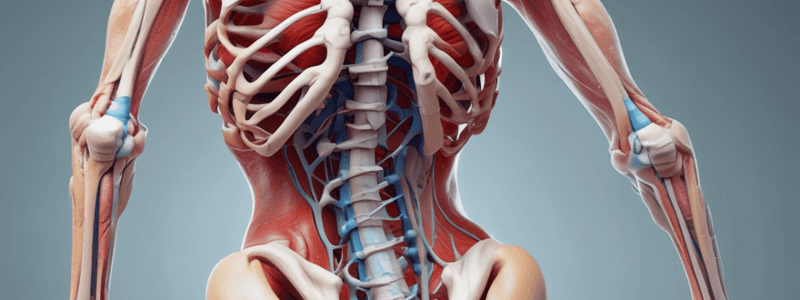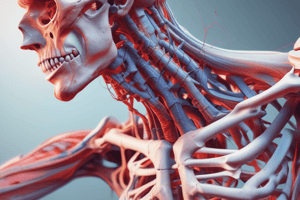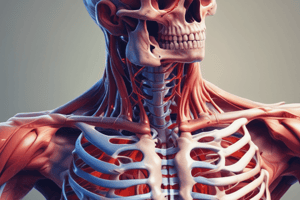Podcast
Questions and Answers
Bones consist of ground substance, mineral salts, and muscles.
Bones consist of ground substance, mineral salts, and muscles.
False (B)
Muscles are responsible for all body movements because they can expand.
Muscles are responsible for all body movements because they can expand.
False (B)
The periosteum tightly surrounds the bone and is made up of connective tissue and blood vessels.
The periosteum tightly surrounds the bone and is made up of connective tissue and blood vessels.
True (A)
Nerve fibers penetrate the compact bone to provide sensitivity.
Nerve fibers penetrate the compact bone to provide sensitivity.
The bone marrow is situated in the spongy area of the bone.
The bone marrow is situated in the spongy area of the bone.
Compact bone does not contain blood vessels as they enter through Haversian canals.
Compact bone does not contain blood vessels as they enter through Haversian canals.
The locomotory system includes bones, muscles, and joints.
The locomotory system includes bones, muscles, and joints.
Muscles are responsible for all body movement because they can contract.
Muscles are responsible for all body movement because they can contract.
Bone cells are abundant in bone structure.
Bone cells are abundant in bone structure.
The matrix of bone, not the cells, gives bone its characteristic properties.
The matrix of bone, not the cells, gives bone its characteristic properties.
The periosteum is a membrane composed of connective tissue, blood vessels, and nerve fibers.
The periosteum is a membrane composed of connective tissue, blood vessels, and nerve fibers.
Compact bone is traversed by Haversian canals where blood vessels enter.
Compact bone is traversed by Haversian canals where blood vessels enter.




